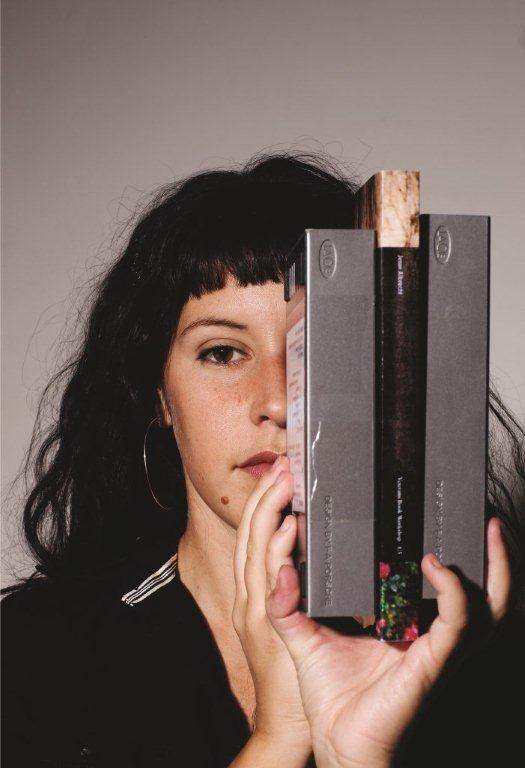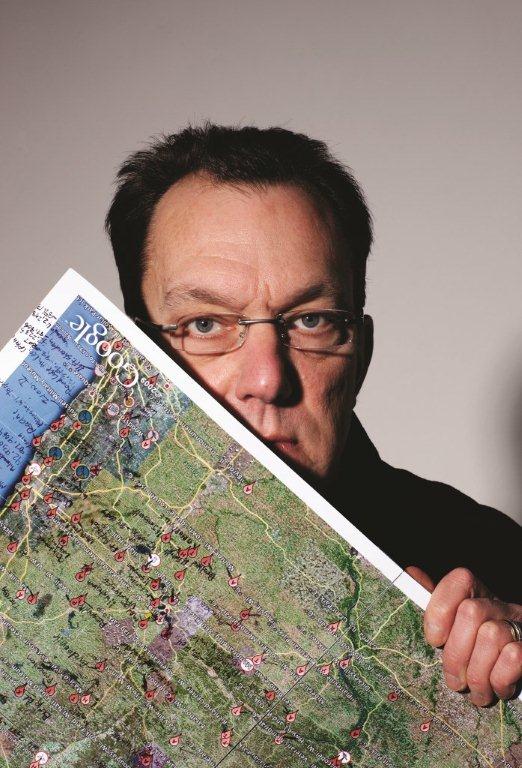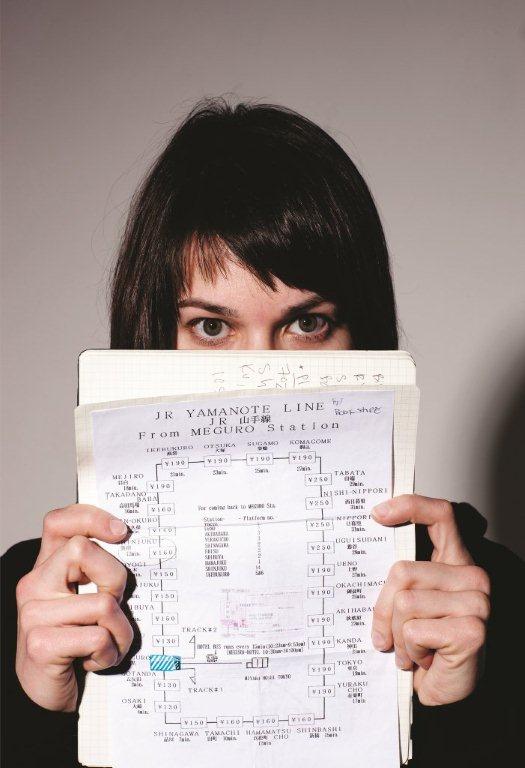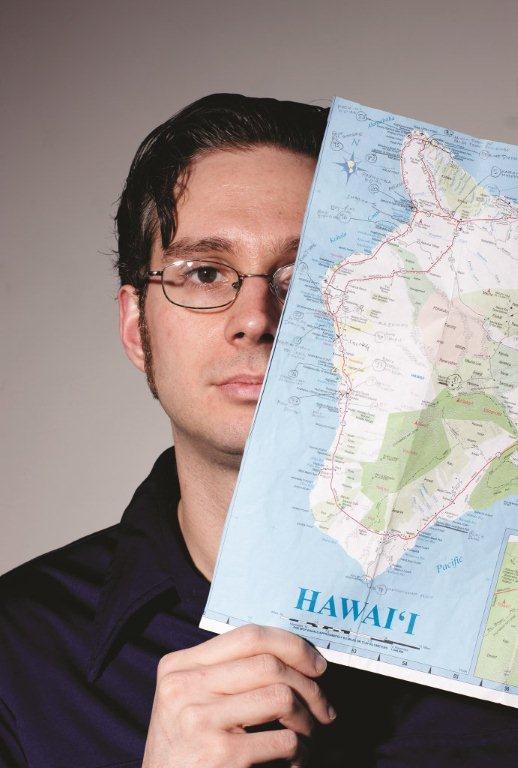Catching Up with the 2009 McKnight Photography Fellows
mnartists.org's Scott Stulen catches up with last year's McKnight Visual Artist Fellows in Photography -- Monica Haller, Paul Shambroom, Carrie Thompson and Lex Thompson -- to talk about their new work and trends in contemporary photography in Minnesota.




IN A STATE KNOWN TO SOME AS “THE LAND OF 10,000 GRANTS,” a McKnight Fellowship is one of the most desirable honors an artist can receive. While its $25,000 stipend is nothing to sneeze at, the one-year fellowship also supports outstanding midcareer artists with public recognition and professional development opportunities, culminating in an exhibition and catalogue.
Last year, the McKnight Foundation designated mnartists.org as the administrative home of its artist fellowships for photographers; the two organizations recently announced Chuck Avery, Amy Eckert, Gina Dabrowski, and Karl Raschke as 2010-2011 fellows. In the meantime, mnartists.org director Scott Stulen got in touch with the four 2009-2010 fellows, selected from 117 applicants by a jury of national photographers and curators, to find out what they’ve been up to. They are: Monica Haller, who created the book Riley and his story (a collaboration with graphic designer Matthew Rezac) from the personal photographs of Iraq War veteran Riley Sharbanno; Paul Shambroom, whose 2008 mid-career survey debuted at the Weisman Art Museum in Minneapolis and traveled to Columbus, Long Beach, and Atlanta; Carrie Thompson, whose work examines aging, family, and the decline of small-town America; and Lex Thompson, who investigates ways that landscapes evince Manifest Destiny in order to perpetuate religious, political, and culturally motivated ideas of progress.
________________________________________________________
How has the McKnight Artist Fellowship for Photographers helped to support your work? What are the projects, travel, supplies, or production directly made possible by the Fellowship?
Monica Haller: The McKnight Fellowship supported research and testing of a workshop with Iraq and Afghanistan war veterans to see if would be meaningful to conduct on a larger scale around the United Sates. The workshop is for war veterans from current conflicts and their families to compile their images and words from combat in a “booklet” of 50 to 300 pages each. To make their books, participants imbed their images and texts into a template and software that has been designed specifically for the project. The text is generated from exercises at the workshop, emails or journal entries from combat. Each participant has his or her own book to take home, share with family or friends or to keep for their own archives. His or her book will also become part of a larger edition. In this unit each story is individually important and independent from its counterparts, but part of a greater whole. What will be the testimonial significance when we gather many people’s voices and pictures together? What will that collective story look like?
The workshop started in Minneapolis September 2009 and will travel around the United States through Spring 2011. Like the Riley book, the veterans’ family and friends are the first audience for the booklets. The booklets are an invitation for communication among them. At the end of the year I will give a way the workshop, software, template to a fitting institution and the whole collection will be exhibited as an installation — a library of books.
The fellowship allowed me to dedicate my time and provided money to secure supplies, to build the software, design the template, find computer donations, print the final books, and all the tiny, but endless details and expenses that go into organizing a workshop of this scale. I offered the first workshop in September at the Minnesota Center for Book Arts. All the books are available on lulu.com under the veterans’ and my name. Onward. Thank you, McKnight.
Paul Shambroom: I received my first McKnight Fellowship in 1985 and it was the first true validation of me as an artist. Each of the awards and fellowships since then has been very significant in development of the professional career. Hard studio, library, and research time are so valuable and necessary for the creation of my work. I wouldn’t have been able to invest the amount of time to create my body of work without the support of these awards.
The current Fellowship has assisted in completing the Shrines and Public Weapons in America series. This summer I traveled throughout the upper Midwest researching and shooting images for this series. In January I plan to travel to California to shoot a few additional sites. The time is also being used to make a book dummy and plans for getting the work out into the world. I have also spent a lot of time in the library researching violence in culture, war and weapons identification.
Lex Thompson: I’ve been working on a new project, Mahalo — photographs that explore the cultural and environmental amalgamations within the diverse Hawaiian Islands, and the way they shattered my expectations of tropical paradise. I’ve made images on O’ahu, Maui, and Hawai’i, and plan a return trip to Kaua’i this summer. I also remodeled a space in my house into a proper studio and replaced a decrepit computer.
Carrie Thompson: To me, the most important thing that I have received from the McKnight is time. I work less at my day job, and more on my art. Another wonderful experience was traveling to Japan making photos over the month of October.
*****
What are your recent or upcoming projects, exhibitions, or publications?
MH: My recently published book, Riley and his story was released in the U.S. November 11, 2009. Riley and his story references a much larger, massive digital archive that I believe has remained primarily invisible and unstable. It has prompted me to create the Veterans Book Workshop (working title) and software — a pseudo systematic way to confront and make meaning from this ever-expanding archive. Right now I’m planning these workshops in other parts of the country. I am not done making work with veterans and their families about the wars in Iraq and Afghanistan, but of course I have other interests too. What are other upcoming projects? Right now they are small ones. Experiments. Currently, I’m in Nicaragua researching for, among other things, a writing piece. I am collaborating with an incredible woman who works with the Plaquemines Parish waterways and restoration (south of New Orleans in the delta). I am excited to spend more energy on that project once the veterans’ workshops are more self-sufficient.
PS: Two group exhibitions and a publishing deal.
CT: I am currently looking for a publisher for my book, I hope we go together, and editing my images from my trip to Japan.
LT: Project wise, I’ll continue work on Mahalo titled after the Hawaiian word for “gratitude”, one of the few Hawaiian words that tourists learn, and subsequently overuse. The photographs look at the cultural and natural collisions that occur within the modest perimeter of these socially, ethnically, religiously, and environmentally with an upcoming trip to Kauai. My work is also included in the recent publication Flash Forward 2009.
****
The impact of Minnesota photographers on the national and international photography scene in recent years has been significant. What are your feelings about the state of the current photography community in Minnesota? What has made Minnesota such a productive place for photographers to work and to remain living?
PS: I for one am not that convinced photography is uniquely special as a medium. However photography has a long history of support locally both at the MIA and Walker. Photography has also been strong within contemporary art since the mid-nineties and locally is no exception with strong mix of types of photography.
LT: The photo community is strong, but the loss of MCP without the rise of a suitable replacement was a blow to our contact with the community outside Minnesota- the number of lectures and photo exhibitions are down, and that is a sad thing for us here. However, recent events at the MIA have been encouraging for growth in these areas and the grants certainly don’t hurt. Plus, having to remain indoors for 6 months of the year gives you lots of time to spot files on the computer.
CT: I think that the current photography community in Minnesota is thriving. There are many photographers working here that have photography as their primary source of income. This happens here because Minnesota values art, and we have so many grants and fellowships that help artists continue their work.
*****
Are there any current trends you see in contemporary photography, both positive and/or negative?
MH: Today the clear trend of the general population is to take pictures obsessively. Incessantly. What are the problems and possibilities for photography in an environment of digital information?
There are massive amounts of images. Like an epidemic. These ever-expanding archives are ubiquitous. They are also evasive; massive amounts of unedited digital information make it hard to access. Our hard drives and digital backups are brimming with picture files but we don’t actually look at or share many of them. What do we do with these archives?
Far from the decisive moment, some images have no focal point. And so in contemporary photography we start to deal with them differently. Rather than focusing on singular images to understand meaning, I’m beginning to treat these massive image banks more like film, as frames that rely on one another through pacing, timing, and arrangement. Then, as Raymond Bellour writes, “as soon as you stop the film, you begin to find time to add to the image” — to write the meaning for yourself. That can eventually bring us back to the photo as a record of an experience that matters, to the singular image as a resting place, a point for focused thought, memory, imagination.
If the singular image was once most closely related, and treated, like sculpture, precious and singular, now these massive amounts of photographic images are treated more like film. They rely on each other; often they have no resting point in one image, but rely on pacing, timing, and the break between images.
Are these trends positive or negative? I’m not sure it matters; the epidemic has happened. The positively/negativity depends on the way artists deal with them, if we choose to deal with them at all. People have always edited photographs, but I think contemporary photographers themselves may start relying it on more deeply, as a kind of making. But, maybe the singular image becomes even more important. A resting place. A breath. A point for focused thought.
PS: I have been thinking about how the “imaged” and instantly accessible our culture is becoming. The entire world has been photographed, photoshopped and made instantly accessible. Goggle maps, flickr, photosynth and other emerging technologies are changing how we access and imagine our environment. I am interested in gadgets and technology and it has got me thinking about my own research. For my recent series I use Flickr and Google Earth to research and map trips of places I would like to photograph. Through these technologies I am able to view sites and subjects from different vantage points and plan shots prior to visiting the actual site. For me it will never replace the road trip, but it is changing the way I research and plan my work.
CT: It seems like photographers are making more books. It could feel this way because I am personally obsessed with books, yet books seem to make sense in an economy that is failing. Books are cheap, yet they tell us the stories that we crave.
LT: I’ve been struck by a lot of compelling new work, particularly by young photographers, that is less subject-based and more freely associative and poetic, held together by aesthetic and sensibility, along the lines of such photographers as Wolfgang Tillmans and Masao Yamamoto.
*****
Where do you find the inspiration in your work? Are there certain photographers that were and continue to be influential to you as an artist?
PS: Early modernist photography. Lee Friedlander, Garry Winogrand, Diane Arbus all continue to be very influential. Larry Sultan who recently passed away. One of the most important influences is a book by Larry Sultan and Mike Mandel titled Evidence in which they sifted through thousands of photographs in the files of the Bechtel Corporation, the Beverly Hills Police Department, the Jet Propulsion Laboratories, the U.S. Department of the Interior, Stanford Research Institute and a hundred other corporations, American government agencies, and educational, medical and technical institutions. They were looking for photographs that were made and used as transparent documents and purely objective instruments–as evidence. Basically photography made for other reasons than as a photo.
CT: I always tell people that I have to be honest and invested to make good work. A few artists that brought me inspiration during my project, I hope we go together were, Doug Dubois, Larry Sultan and Alec Soth. Doug Dubois wrote to me “sometimes you need to just be there — that’s when you put the camera down. It’s picking it up (again) that’s the most difficult. You have to pull yourself away and find that here/there space of the photograph.” Larry Sultan’s project Pictures from Home helped the art world realize that family is a valid subject for art. His photographs show beautiful and intimate moments that many can relate. There’s an interesting interview with him here.
And Alec (Soth), well he is my boss, the first professional photographer that I can call my friend, and a great teacher. I show him all of my book dummies and he shows me all of his, we bounce ideas off each other and this is incredibly important. Living in a hermetically sealed bubble is the easiest way to kill any art.
LT: Well, there are certainly lots of photographers I like, and even see my work as related to, but as far as inspiration goes, I’m more likely to find that in artists of other media – currently Walton Ford — or just wandering in the world driving across the country. I tend to trip over it.
*****
I know that you each have “day jobs” teaching, working as a studio assistant etc. As with all artists it is a challenge to balance your art career with other obligations and responsibilities. Any tips in share for other artists (and me) in how to maintain a productive art career and find time for everything else?
MH: Ah, I am in need of many tips these days, too.
PS: Balance. The grants help to live more on the middle class and give time to make-work more comfortable. I started gradually, first doing assignment photography and then moving into my art projects. In the end you figure it out. I am teaching now and I never anticipated it as being my “gig”.
CT: I am lucky; I am Alec Soth’s studio manager. My job is like graduate school, yet I get paid. I work on art and art related things all day. I do get burned out, but I only work Mon-Thurs so over the weekend I always find time to work on my own photography. My advice is always take time to DECOMPRESS.
LT: Being stuck at home when the baby goes to bed at 6pm gives you a nice evening to work without distractions, like seeing friends or going on dates with your wife.
*****
Any advice for aspiring photographers?
PS: Work hard, see a lot of work. Get your mind out of the art world and into the real world. Believe of what you do. Get your work out.
CT: Listen to Dave Hickey; he will help you save a lot of time and money.
and here:
If you’re into reading, read Air Guitar: Essays on Art and Democracy.
LT: Learn to draw?
*****
If you could own one photograph to live with (money or availability is no object in this fantasy world question) what would it be?
MH: Right now? An image of the Black Power salute at the 1968 Olympic Games in Mexico City, or David Goldes’ From the Point 9/18/99.
PS: Diane Arbus took a picture of my father for a magazine piece. I have been trying to get a print of it from her estate, with no luck. Other than that, a Andreas Gursky or the Diane Arbus Identical Twins, Roselle, New Jersey, 1967.
LT: Lee Friedlander’s Mount Rushmore, South Dakota or Joel Sternfeld’s McLean, Virginia, December 4, 1978
CT: CT: Larry Sultan’s Thanksgiving Turkey, an image from his book Pictures from Home.
________________________________________________________
About the artists:
MONICA HALLER: has a B.A. in Peace and Conflict Studies and a M.F.A. in Visual Studies. She has received fellowships from the Bush Foundation, McKnight Foundation, Jerome Foundation, and University of Minnesota Human Rights Center and Law School. She has completed residencies at Massachusetts Institute of Technology and the Blacklock Nature Sanctuary and has exhibited at venues including The Soap Factory, Soo Visual Art Center, Intermedia Arts, and University of Notre Dame. She has lectured and taught at various institutions including the Minneapolis College of Art and Design, University of Minnesota, Macalester College and the Notre Dame Peace Conference.
PAUL SHAMBROOM: Paul Shambroom is a photographer who explores American power and culture. His work is in the collections of many major American museums and has been exhibited internationally. His photographs have been published in three monographs:
Paul Shambroom: Picturing Power (2008), Face to Face with the Bomb: Nuclear Reality After the Cold War (2003), and Meetings (2004). He has received fellowships from the Guggenheim Foundation and the Creative Capital Foundation, among others. A survey exhibition (with full catalog) of Shambroom’s major projects traveled to museums throughout the U.S. in 2008-2009. Paul was born in Teaneck, NJ and lives in Minneapolis.
CARRIE THOMPSON: is a photographer born and based in Minneapolis, Minnesota. She is the recipient of a McKnight fellowship. Her work is represented in private collections, including Martin Weinstein. Carrie’s photographs have been featured in numerous exhibitions in California and throughout the Midwest.
LEX THOMPSON: Trained as a historian at New College of Florida, Lex Thompson furthered his education at Yale University, obtaining a Masters of Religion with a concentration in Visual Arts and an MFA in Photography at the San Francisco Art Institute. His work has been exhibited at Point of View Gallery and Exit Art in New York, SF Camerawork and Southern Exposure in San Francisco, The Soap Factory in Minneapolis, Arthouse in Austin, The Photographic Center Northwest in Seattle, and Boxspace in Miami. Thompson received a 2008 Minnesota State Arts Board Artist Initiative Grant and was selected as a 2009 Flash Forward Emerging Photographer. He is a recipient of a 2009/2010 mnartists/McKnight Artist Fellowship for Photographers.
________________________________________________________
Related exhibition:
An exhibition of work by the 2008 McKnight Visual Artist Fellows in Photography — Priscilla Briggs, Osama Esid, David Goldes, and Justin Newhall — is currently on view at Franklin Art Works in Minneapolis.
________________________________________________________
About the interviewer: Scott Stulen is the Project Director for mnartists.org.